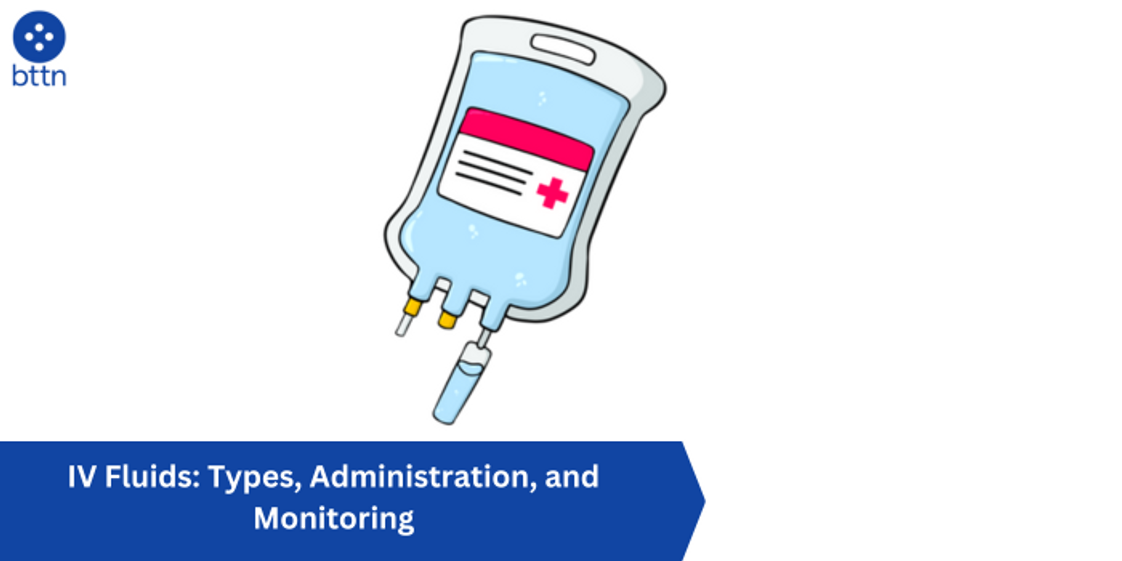
IV Fluids: Types, Administration, and Monitoring
Posted by Pankaj Dhiman on Mar 4th 2024
In the realm of healthcare, intravenous (IV) fluids play a vital role in restoring hydration, replenishing essential nutrients, and maintaining electrolyte balance. Whether you've experienced dehydration, undergone surgery, or received medical treatment, chances are you've encountered IV fluids. But what exactly are they, and why are they administered? Let's delve into the world of IV fluids, exploring their types, administration process, monitoring, and more.
What are IV fluids?
IV fluids are sterile solutions containing water, electrolytes (like sodium, potassium, and chloride), and sometimes carbohydrates (like dextrose). Delivered through a thin tube (catheter) inserted into a vein, they bypass the digestive system and directly replenish fluids lost due to various conditions.
Must Read: IV Medical Equipment & Supplies - Top 10 Best-Selling Products
Why are intravenous fluids used?
Several medical situations necessitate IV fluids:
- Dehydration: When severe fluid loss occurs due to vomiting, diarrhea, excessive sweating, or burns, IV fluids rapidly restore hydration and vital electrolytes.
- Electrolyte imbalances: Electrolytes are crucial for various bodily functions. IV fluids can replenish depleted electrolytes, correcting imbalances that can cause muscle weakness, heart rhythm disturbances, and seizures.
- Blood loss: During or after significant blood loss due to surgery, trauma, or internal bleeding, IV fluids are used to replace lost volume and maintain blood pressure.
- Nutrient supplementation: In individuals unable to eat or drink adequately due to illness or injury, IV fluids provide essential nutrients for sustenance.
- Medication administration: Certain medications, particularly antibiotics and chemotherapy drugs, are administered intravenously for faster and more effective action.
Must Read: At-Home Drug Tests: What They Are and How They Work
What are the effects of dehydration?
Dehydration, a condition where the body loses more fluids than it takes in, can have various consequences:
- Fatigue and dizziness
- Headache
- Dry mouth and skin
- Constipation
- Decreased urine output
- Confusion
- In severe cases, organ damage and even death
Must Read: How to Properly Use Wound Care Dressings: A Guide to Optimal Healing
Procedure Details:
Types of IV fluids:
IV fluids are primarily categorized based on their tonicity, which refers to the concentration of solutes compared to blood plasma:
- Isotonic: These fluids have the same concentration of solutes as blood plasma and are commonly used for volume replacement and electrolyte management. Examples include normal saline (0.9% sodium chloride) and lactated Ringer's solution.
- Hypotonic: These fluids have a lower concentration of solutes than plasma and are used for specific situations, like treating severe sodium imbalances.
- Hypertonic: These fluids have a higher concentration of solutes than plasma and are mainly used to treat specific conditions like severe head injuries or diabetic ketoacidosis.
Must Read: Head Injuries: Unraveling Causes, Symptoms & Prevention for a Secure Future
What happens during rehydration with IV fluids?
Once administered, IV fluids enter the bloodstream, replenishing lost fluids and electrolytes. This restores blood volume, improving blood pressure, and preventing further complications associated with dehydration and electrolyte imbalances.
What happens after IV fluids?
After receiving IV fluids, patients are monitored for any adverse reactions. The healthcare team observes vital signs like blood pressure, heart rate, and urine output. Depending on the individual's condition, they may gradually transition to oral fluids and food as their condition improves.
Must Read: 10 Best Selling Elastic Bandages of 2024
Risks / Benefits:
Benefits:
- Rapid and effective rehydration
- Correction of electrolyte imbalances
- Improved blood pressure and circulation
- Delivery of essential nutrients and medications
Risks:
- Infiltration: Leakage of IV fluids outside the vein, causing irritation and pain.
- Infection: Improper insertion or maintenance of the catheter can increase the risk of infection.
- Fluid overload: Overhydration can lead to complications like pulmonary edema (fluid buildup in the lungs).
- Electrolyte imbalances: Inappropriate selection or administration of IV fluids can worsen existing imbalances.
Recovery time after receiving IV fluids:
The recovery time depends on the severity of the underlying condition and the amount of fluids administered. In most cases, patients experience immediate improvement in symptoms like fatigue and dizziness. However, complete recovery from the underlying condition may take longer and involve additional management strategies.
When to Call the Doctor
Seek immediate medical attention if you experience:
- Fever, chills, or redness around the IV insertion site
- Difficulty breathing or chest pain
- Swelling or pain at the IV site
- Excessive thirst or urination
Must Read: 12 Best-Selling Wound Care Products in the US (2024)
FAQs:
Q: Are IV fluids painful?
Inserting the catheter may cause a slight prick, but the procedure itself is usually not painful. Medications like topical numbing creams can further minimize discomfort.
Q: Can I receive IV fluids at home?
Home IV therapy is possible under certain circumstances, typically requiring a healthcare professional's supervision and training.
Q: Are there any alternatives to IV fluids?
Oral rehydration solution (ORS) can be effective for mild to moderate dehydration. However, IV fluids are necessary when oral intake is not possible or severe dehydration requires faster and more effective fluid replacement.





























































